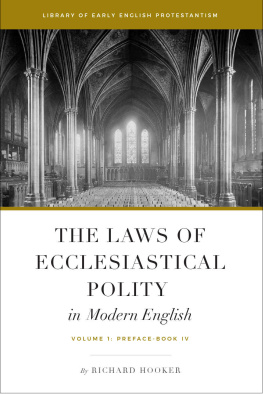REFERENCES
1. Abel G, Fitzgerald L, Healy C, Taylor A. Taking the crime out of sex work: New Zealand sex workers' fight for decriminalisation. Bristol England: Policy Press; 2010.
2. Armstrong L. Screening clients in a decriminalised street-based sex industry: Insights into the experiences of New Zealand sex workers. Australian & New Zealand Journal of Criminology. 2014;47(2):207-222.
3. Abel G. A decade of decriminalization: Sex work down under but not underground. Criminology & Criminal Justice. 2014;14(5):580-592.
4. Comte J. Decriminalization of Sex Work: Feminist Discourses in Light of Research. Sexuality & Culture. 2013;18(1):196-217.
5. Pitcher J, Wijers M. The impact of different regulatory models on the labour conditions, safety and welfare of indoor-based sex workers. Criminology & Criminal Justice. 2014;14(5):549-564.
6. Armstrong L. From Law Enforcement to Protection? Interactions between Sex Workers and Police in a Decriminalized Street-Based Sex Industry: Table 1. British Journal of Criminology. 2016;57(3):570-88.
7. Ministry of Justice. Report of the Prostitution Law Review Committee on the Operation of the Prostitution Reform Act 2003 [Internet]. New Zealand Government; 2008. Available from: http://prostitutescollective.net/wp-content/uploads/2016/10/report-of-the-nz-prostitution-law-committee-2008.pdf
8. Harcourt C, O'Connor J, Egger S, Fairley C, Wand H, Chen M et al. The decriminalisation of prostitution is associated with better coverage of health promotion programs for sex workers. Australian and New Zealand Journal of Public Health. 2010;34(5):482-486.
9. Abel G, Fitzgerald L, Brunton C. The Impact of Decriminalisation on the Number of Sex Workers in New Zealand. Journal of Social Policy. 2009;38(3):515-531.
10. Armstrong L. Stigma, decriminalisation, and violence against street-based sex workers: Changing the narrative. Sexualities. 2018;.
11. Wojcicki J. Race, Class and Sex: The Politics of the Decriminalisation of Sex Work. Agenda. 1999;(42):94.
12. Minichiello V, Scott J. Male Sex Work and Society. Columbia University Press; 2014.
13. Lazarus L, Deering K, Nabess R, Gibson K, Tyndall M, Shannon K. Occupational stigma as a primary barrier to health care for street-based sex workers in Canada. Culture, Health & Sexuality. 2012;14(2):139-150.
14. Amnesty International. The Human Cost Of Crushing The Market Criminalization Of Sex Work In Norway [Internet]. London; 2016. Available from: https://www.amnesty.org/en/documents/eur36/4034/2016/en/
15. Amnesty International. Amnesty International Policy On State Obligations To Respect, Protect And Fulfil The Human Rights Of Sex Workers [Internet]. London; 2016. Available from: https://www.amnesty.org/en/documents/pol30/4062/2016/en/
16. Lutnick A, Cohan D. Criminalization, legalization or decriminalization of sex work: what female sex workers say in San Francisco, USA. Reproductive Health Matters. 2009;17(34):38-46.
17. Barry K. Female sexual slavery. NYU Press; 1979.
18. Barry K. The prostitution of sexuality. New York: New York University Press; 1995.
19. Dworkin A. Pornography: Men possessing women. London: The Women's Press; 1994.
20. Dworkin A. Prostitution and Male Supremacy. Michigan Journal of Gender and Law. 1993;1(1):1-12.
21. Farley M. Prostitution and the Invisibility of Harm. Women & Therapy. 2003;26(3-4):247-280.
22. Farley M. "Bad for the Body, Bad for the Heart": Prostitution Harms Women Even if Legalized or Decriminalized. Violence Against Women. 2004;10(10):1087-1125.
23. Farley M. Prostitution harms women even if indoors: Reply to Weitzer. Violence Against Women. 2005;11(7):950-964.
24. Farley M, Cotton A, Lynne J, Zumbeck S, Spiwak F, Reyes M et al. Prostitution and Trafficking in Nine Countries. Journal of Trauma Practice. 2004;2(3-4):33-74.
25. Kingston S, Hammond N. Women Who Buy Sexual Services in the UK: End of Funded Project Report. Lancaster University: Law School; 2016.
26. Jeffreys S. The industrial vagina: The political economy of the global sex trade. London: Routledge; 2010.
27. MacKinnon C. Pornography, civil rights, and speech. Harvard Civil Rights-Civil Liberties Law Review. 1985;20(1):170.
28. Raphael J, Shapiro D. Violence in Indoor and Outdoor Prostitution Venues. Violence Against Women. 2004;10(2):126-139.
29. Raphael J, Shapiro D. Reply to Weitzer. Violence Against Women. 2005;11(7):965-970.
30. Raymond J. Ten Reasons for Not Legalizing Prostitution and a Legal Response to the Demand for Prostitution. In: Farley M, ed. by. Prostitution, Trafficking and Traumatic Stress. Bringhampton: The Haworth Press; 2003. p. 315332).
31. Raymond J. Prostitution on Demand. Violence Against Women. 2004;10(10):1156-1186.
32. Waltman M. Sweden's prohibition of purchase of sex: The law's reasons, impact, and potential. Women's Studies International Forum. 2011;34(5):449-474.
33. Phoenix J. Making sense of prostitution today. London: Macmillan Press; 1999.
34. Phoenix J. Regulating Prostitution: Controlling Womens Lives. In: Heidensohn F, ed. by. Gender and Justice: New Concepts and Approaches. Taylor & Francis Ltd; 2006.
35. Prostitution Law Reform in New Zealand [Internet]. New Zealand Parliament. 2012 [cited 6 October 2019]. Available from: https://www.parliament.nz/en/pb/research-papers/document/00PLSocRP12051/prostitution-law-reform-in-new-zealand
36. Jones T, Newburn T. Widening Access: Improving Police Relations with Hard to Reach Groups. Great Britain, Home Office, Policing and Reducing Crime Unit; 2001.
37. PYETT P, WARR D. Vulnerability on the streets: Female sex workers and HIV risk. AIDS Care. 1997;9(5):539-547.
38. Pyett P, Warr D. Women at risk in sex work: strategies for survival. Journal of Sociology. 1999;35(2):183-197.
39. Mullin F. 'Prostitute Cautions' Are Chaining British Sex Workers to the Streets [Internet]. Vice. 2015 [cited 10 March 2019]. Available from: http://www.vice.com/en_uk/read/uk-sex-work-carejobs-235
40. Bell S. Whore carnival. Brooklyn, N.Y.: Autonomedia; 1995.
41. Califia P. Whoring in Utopia. In: Califia P, ed. by. Public Sex: The Culture of Radical Sex. Pittsburg: Cleis; 1994. p. 242248.
42. Willis E. No more nice girls: Countercultural essays. Minneapolis: University of Minnesota Press; 2012.
43. Rubin G. Thinking sex: Notes for a radical theory of the politics of sexuality. In: Vance C, ed. by. Pleasure and danger: Exploring female sexuality. Boston: Routledge & Kegan Paul; 1984. p. 267319.
44. Baral S, Friedman M, Geibel S, Rebe K, Bozhinov B, Diouf D et al. Male sex workers: practices, contexts, and vulnerabilities for HIV acquisition and transmission. The Lancet. 2015;385(9964):260-273.
45. Benoit C, Ouellet N, Jansson M. Unmet health care needs among sex workers in five census metropolitan areas of Canada. Canadian Journal of Public Health. 2016;107(3):e266-e271.
46. Benoit C, Jansson S, Smith M, Flagg J. Prostitution Stigma and Its Effect on the Working Conditions, Personal Lives, and Health of Sex Workers. The Journal of Sex Research. 2017;55(4-5):457-471.
47. Crago A. Our Lives Matter: Sex Workers Unite for Health and Rights. Open Society Institute; 2008.
48. Chu S, Glass R. Sex Work Law Reform in Canada: Considering Problems with the Nordic Model. Alberta Law Review. 2013;51(1):101.
49. Decker M, Crago A, Chu S, Sherman S, Seshu M, Buthelezi K et al. Human rights violations against sex workers: burden and effect on HIV. The Lancet. 2015;385(9963):186-199.
50. Deering K, Amin A, Shoveller J, Nesbitt A, Garcia-Moreno C, Duff P et al. A Systematic Review of the Correlates of Violence Against Sex Workers. American Journal of Public Health. 2014;104(5):e42-e54.
51. Donovan B, Harcourt C, Egger S, Watchirs Smith L, Schneider K, Kaldor J et al. The Sex Industry in New South Wales: a Report to the NSW Ministry of Health. Sydney: Kirby Institute, University of New South Wales; 2012.
Next page









